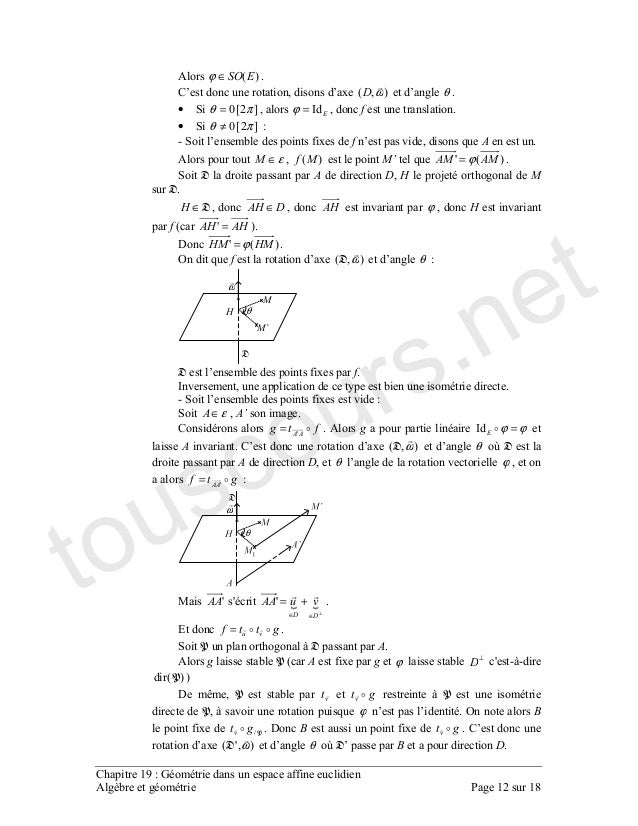

In geometry, a hyperplane of an n-dimensional space V is a subspace of dimension n − 1, or equivalently, of codimension 1 in V. Therefore, a necessary condition for S to be a hyperplane in X is for S to have codimension one in X. The difference in dimension between a subspace S and its ambient space X is known as the codimension of S with respect to X. While a hyperplane of an n-dimensional projective space does not have this property. For instance, a hyperplane of an n-dimensional affine space is a flat subset with dimension n − 1 and it separates the space into two half spaces. In different settings, hyperplanes may have different properties. This notion can be used in any general space in which the concept of the dimension of a subspace is defined. For example, if a space is 3-dimensional then its hyperplanes are the 2-dimensional planes, while if the space is 2-dimensional, its hyperplanes are the 1-dimensional lines. In geometry, a hyperplane is a subspace whose dimension is one less than that of its ambient space. A plane is a hyperplane of dimension 2, when embedded in a space of dimension 3. Two intersecting planes in three-dimensional space.


 0 kommentar(er)
0 kommentar(er)
